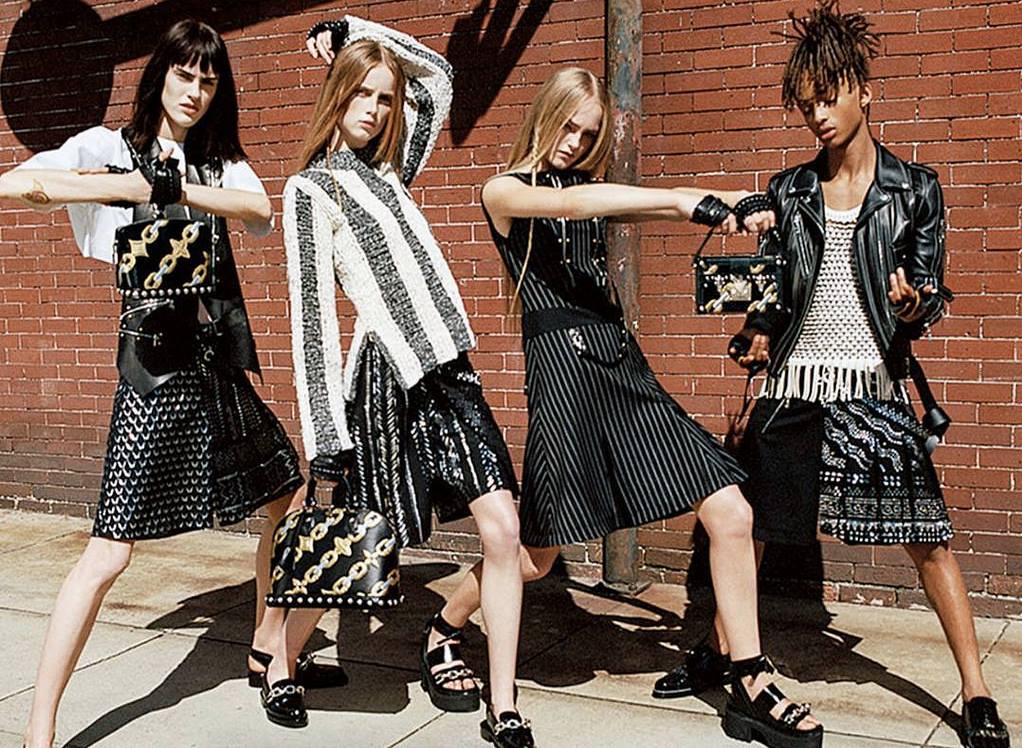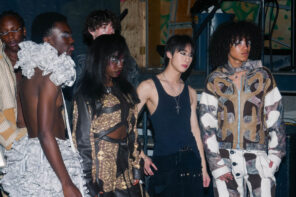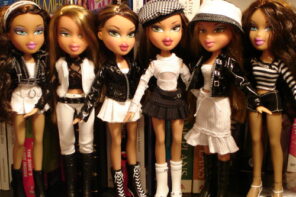As gender norms become less rigid, clothing trends follow suit. ‘Unisex,’ a word that infiltrated the clothing industry in the 1960s and 70s, has undergone different manifestations throughout its history. The first ripples of gender-bending fashion were seen with the ‘garconne’ trend of the 1920s, a period when women sported cropped haircuts, long skirts, and high collared shirts. Today, this look may seem conservative, but back then, it was a complete deviation from traditional gender norms. It reflected a changing world, a world in which women were finally able to escape the stifling confines of the household. Similarly, the unisex fad rose to prominence again in the 1960s as a reaction to the oppressive gender norms of the 1950s, the baby boomer era. Women wishing to escape the category of what was thought to be typically ‘feminine’ began to don pants and ties, the garment rebellion of second-wave feminism.
Of course, today, ‘unisex’ is hardly a relevant term for women, as they have adopted most clothing items that have, at one time or another, been considered categorically male.* But where do men fit into this? It would seem as though throughout history, women have adopted men’s clothing as a means of bringing about political change. But for the most part, when men donned women’s apparel, it was perceived as “drag,” outside of the realm of ‘normal.’ One such example is when David Bowie wore a dress on the cover of his 1970 album The Man Who Sold the World.
It appears as though only one article of clothing stands in the way of mainstream society accepting the idea of completely gender-fluid clothing: the skirt. Skirts have almost always been gender-coded as female; men did wear them in the early days of the Roman, Greek, and Egyptian Empires, but abandoned them in the Victorian era. However, fast-forward to the present and you’ll find that men are making an effort to tear down the gender binary by way of fashion. Although it has not infiltrated the mainstream completely, the men-in-skirts-and-dresses movement is well underway, and the trend has trickled down from the runway to celebrities and other men unafraid to experiment with fashion.
In recent decades, the phenomenon of skirt-bearing men has seen its resurgence. That said, the difference between the men who attempt to jump-start this trend today and those who tried in past years is that previously, the methods that designers employed – though admirable – were too highbrow, elitist, or small-minded to bring about significant change. For instance, in 1984, Jean Paul Gaultier, risk-taking fashion designer, sent a pack of male models down the runway of his spring/summer fashion show dressed in skirts of different colours and lengths. Gaultier was cited as saying, “I don’t believe that fabrics have a gender, any more than certain garments do,” a statement that many thought was going to revolutionize gendered fashion. However, the trend did not translate to the mainstream and the impact was left on the runway.
Similarly, in 1999, Rolling Stone released an editorial photoshoot by Mark Seliger that featured Brad Pitt modelling skimpy mini dresses on a beach. The publication released the photoshoot with the headline “A Man, A Dress, Another Planet,” with the idea denoting that only on another planet would men be seen in this attire. This editorial did not inspire a radical shift in men’s apparel; instead, it registered to readers as ridiculous—as a spectacle that, while interesting, would not be taken seriously as a mainstream fashion trend. Likewise, in 2004, the Costume Institute at The Metropolitan Museum of Art put on an exhibit called “Bravehearts: Men in Skirts” that explored the history of men in skirts in high fashion. A New York Times reporter, wishing to test the ‘so-called masculinity’ of the skirt advertised by The Met, walked around Brooklyn in a Jean Paul Gaultier skirt and was subsequently mocked, ultimately concluding that what the museum was pushing was merely an ‘academic theory.’
Today, though, the main difference is that many skirt-wearing men have explicitly made it clear that they want to actively break down gender binaries and spread this message to the public. Therefore, the current trend of men wearing skirts is revolutionary, not only in terms of fashion, but politically as well: it brings us one step closer to abandoning the gender binary. One indicator of this is a transition being made from skirts being worn by models of high fashion to skirts being worn by celebrities in a very visible and public way. There was, admittedly, somewhat of a ‘trial and error’ period for this. For instance, Kanye West famously took to the stage in a knee length Givenchy leather skirt at his 2012 performance for Hurricane Sandy; however, what might have been a heroic move turned cowardly when, after being ridiculed, West and his publicist demanded that pictures of him from that night, which had already widely circulated the internet, be removed from the web. As well, Jared Leto wore a simple black skirt to the iHeartRadio Music Awards in 2014, and although he did not regret the decision like Kanye, his efforts were merely chalked up to his “weirdness,” and were dismissed as unsurprising because of his frequent use of eyeliner.
More recently, two celebrities have stood out as pioneers of the ‘men in skirts’ movement: Jaden Smith and Young Thug. In May of 2015, photos surfaced of Jaden Smith posing with his date at his senior prom, confidently donning a white skirt. In January 2016, Louis Vuitton released their spring/summer womenswear campaign, which among a group of female models. Smith makes his skirt-wearing intentions very clear in an interview with Nylon Magazine where he states, “I’m taking the brunt of it so that later on, my kids and the next generations of kids will all think that certain things are normal that weren’t expected before my time.” Similarly, Young Thug dons an elaborately ruffled dress in the cover of his 2016 album No, My Name is Jeffrey, which stirred an expected amount of controversy and a mix of positive and negative reactions from the rap community. As well, Young Thug sports a long black dress in a recent Calvin Klein ad with text overlay that reads “I disobey in #mycalvins.” In the campaign’s video, the rapper says, “In my world, you can be a gangsta with a dress or you can be a gangsta with baggy pants. I feel like there’s no such thing as gender.” Both Jaden Smith and Young Thug wear skirts and dresses with the intention of bringing about change in the way that the public views traditional gender roles, rather than merely as some sort of publicity stunt.
There’s still a long way to go before the majority of men are regularly donning skirts and no one bats an eyelash; however, it does feel like our generation is coming close. It seems as though the factor which separates these brave men from their skirt-wearing predecessors is intent: the fact that they are attempting to bring about change and actively pursuing this cause with the goal of blurring gender lines in mind. Many gender bending pioneers throughout history were considered ‘ahead of their time,’ so is it possible that this time has finally come?
* For the purpose of this article, the terms ‘male,’ and ‘men’ have been used to denote a masculine identity, whereas ‘female’ and ‘women’ have been used to denote a feminine identity. These words are used for the purposes of convenience and conceptual clarity and are not meant to be exclusionary.








